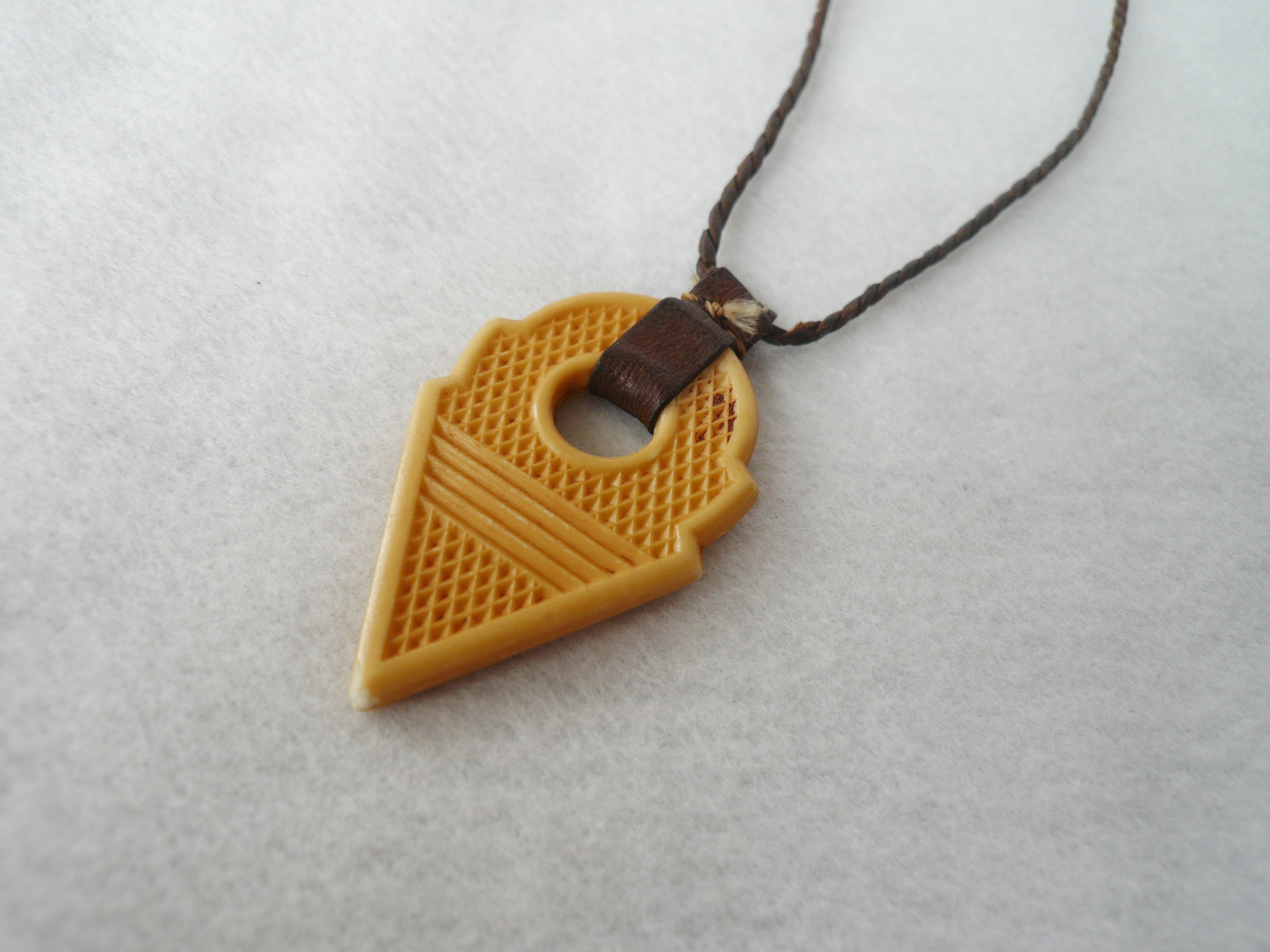Descrição
Pingente conhecido como Talhakimt, usado como amuleto. Pode ser trançado nos cabelos. Produzidos na Europa para o mercado africano. Porcelana tipo Prosser.
Talhakimt pendants were produced by both the French and Czech-Bohemian bead industries during the trade bead era, which peaked between the late 19th and early 20th centuries. The Czech versions were made from molded glass, and came in a variety of colors, including green, red and blue. French Talhakimts were the brainchild of Jean-Felix Bapterosses, a pioneering button and bead maker. As a young man, Bapterosses traveled to England, where he studied the ÒProsserÓ technique of molding and firing a paste to produce a hard porcelain-like material. Bapterosses returned to France and, after making several improvements to the technique, implemented it at his button and bead factory in Briare. Talhakimt pendants were one of the many items manufactured at the factory.
French Talhakimts, along with their Czech-Bohemian counterparts, were exported mainly to West Africa, where they were believed to have amuletic properties. Mauritanian women wore them in elaborate headdresses, plaited into long braids. The most spectacular examples of this kind of adornment were found among the dancers of the Guedra, a traditional dance in which women displayed their love for men in ritual form.
Medidas
comp. pingete 6 cm X larg. 4 cm + fio

